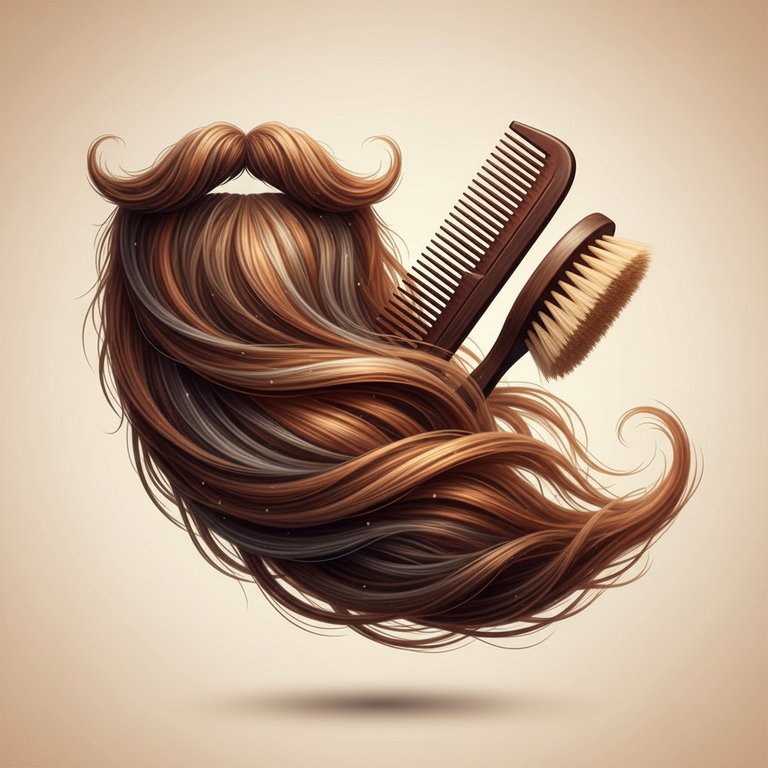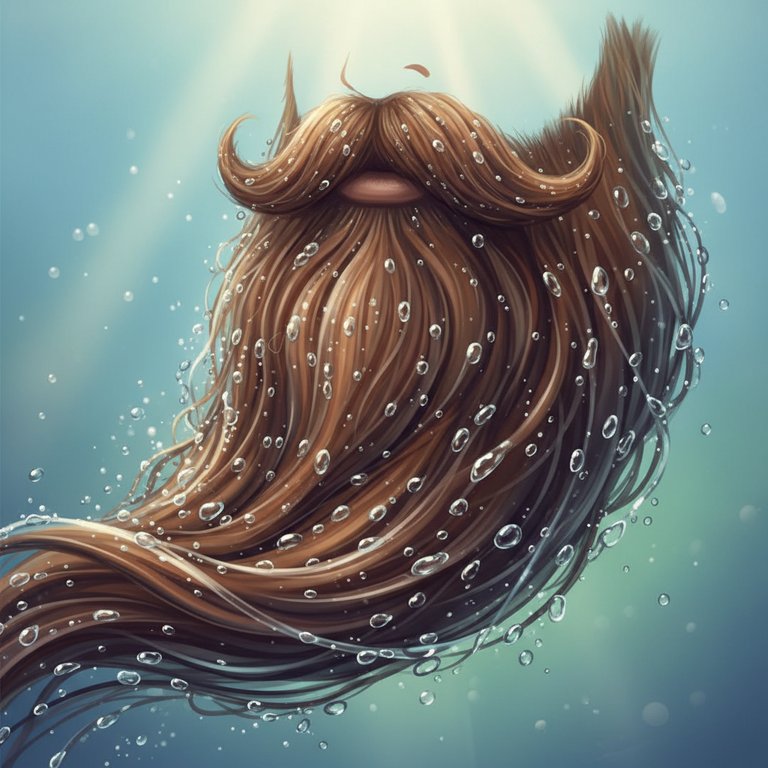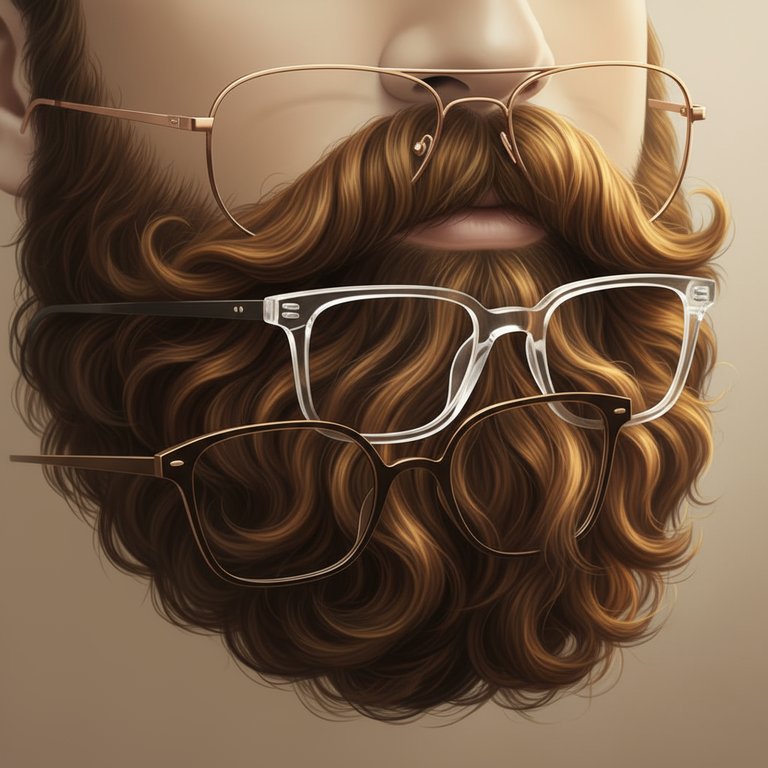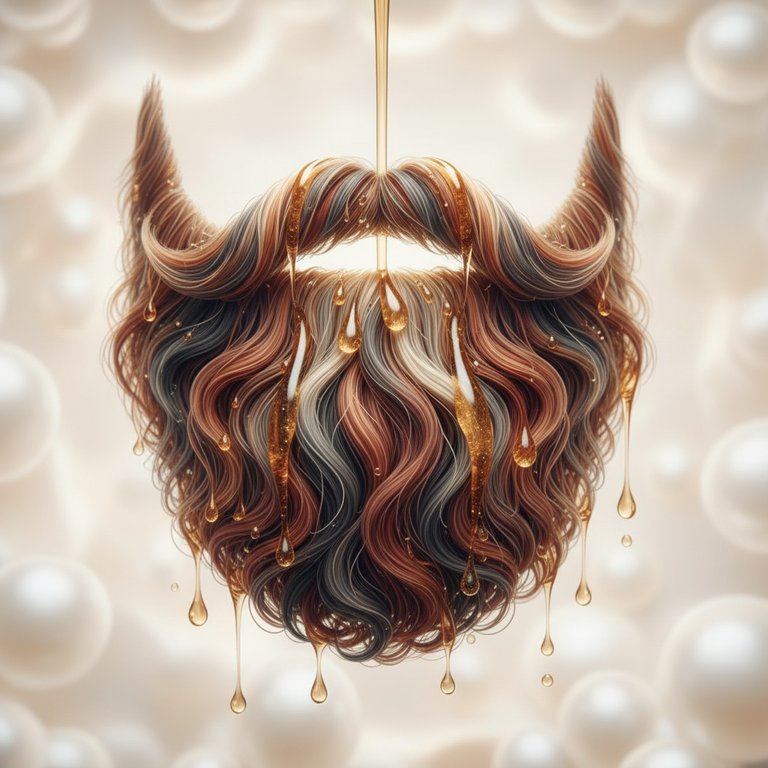Hey there, beard brothers and facial hair fanatics! Got a long beard that’s starting to feel more like a wild forest than a majestic mane? You’re in the right place. Growing a long beard is an achievement, a statement, a lifestyle – but keeping it looking its best? That takes a little know-how. And when it comes to long beards, one of the most underrated, yet utterly essential, grooming habits is brushing. It's not just about looking good; it's about feeling good, too. So, let’s dive deep into the art and science of brushing your magnificent long beard, ensuring it stays epic, healthy-looking, and unbelievably soft. Ready to transform your beard game? Let's get to it!
Why Brushing Your Long Beard is a Game Changer
Think of your long beard as a prized possession – because it is! And like any prized possession, it needs proper care to shine. Brushing isn't just a quick comb-through; it's a vital part of its upkeep.
First off, let’s talk about detangling. Long beards, by their very nature, love to tangle, knot, and generally make a mess of themselves. Regular brushing helps to gently work out these knots before they become a serious problem, preventing breakage and keeping your beard smooth.
Next up: distribution of natural oils and products. Your skin produces natural oils (sebum) that are essential for beard health. Brushing helps spread these oils from the root all the way down to the tips of your beard hairs. This natural conditioning is fantastic. When you apply beard oil or balm, brushing helps distribute that goodness evenly, ensuring every strand gets its share of nourishment. This leads to a beard that looks and feels softer, shinier, and less prone to dryness.
And let's not forget styling and shaping. A long beard can sometimes have a mind of its own. Brushing allows you to train your beard hairs to grow in a particular direction, giving it a neater, more uniform appearance. It’s like giving your beard a gentle daily workout, teaching it good habits.
Finally, brushing helps with cleanliness. It can gently remove loose hairs, food particles, and any other tiny bits that might have found a home in your beard throughout the day. A clean beard is a happy beard!
Choosing Your Weapons: The Right Tools for the Job
You wouldn't use a butter knife for a steak, right? The same goes for your beard. The right tools make all the difference, especially for a long beard.
The Wide-Tooth Wooden Comb: Your First Line of Defense
Before you even think about a brush, a good quality wide-tooth wooden comb is your best friend. Why wooden? Plastic combs can sometimes create static and have sharp edges that can snag and damage beard hairs. Wooden combs are gentle, glide through tangles, and are excellent for initial detangling, especially after a wash or when your beard is particularly unruly. Look for one that’s anti-static and has smooth, rounded teeth.
The Boar Bristle Brush: The Polisher and Distributor
This is the workhorse for long beards. Boar bristles are fantastic because they mimic the texture of your own hair, making them incredibly effective at distributing natural oils and beard products. They also provide a gentle exfoliation to the skin underneath your beard, helping to prevent itchiness and flakiness. The bristles are firm enough to penetrate a long, dense beard but soft enough not to cause irritation. A boar bristle brush is key for styling, shaping, and giving your beard that polished, healthy-looking finish.
Optional: The Smaller Styling Brush
For really specific styling or taming those tricky mustache hairs, a smaller, softer bristle brush might come in handy. It’s not essential for everyone, but some beard enthusiasts find it useful for precision work.
Pre-Brush Prep: Setting Your Beard Up for Success
Just like you wouldn’t paint a masterpiece on a dirty canvas, you shouldn’t brush a dirty or overly tangled beard. A little prep goes a long way.
Start Clean (Mostly Dry): Ideally, you want to brush your beard when it’s clean and mostly dry. Brushing a soaking wet beard can cause breakage as wet hair is more elastic and prone to stretching. If you’ve just washed it, gently pat it dry with a towel until it’s damp, then let it air dry a bit more before you begin.
Apply Your Nourishment: This is where beard oil or beard balm comes in. A few drops of beard oil or a small amount of balm worked into your beard will provide lubrication, reduce friction, and add nourishment, making the brushing process smoother and more beneficial. Work the product from the roots to the tips, ensuring good coverage.
Your Step-by-Step Guide to Brushing a Long Beard Like a Pro
Alright, let’s get down to business. Here’s how to brush your long beard for maximum impact and minimum fuss.
Step 1: The Initial Detangle with Your Wide-Tooth Comb
Start by gently combing your beard from the bottom upwards, working out any major tangles. Begin at the tips and slowly work your way up towards the roots. This helps to loosen knots without pulling or damaging your beard. Be patient and gentle – never yank!
Step 2: Apply Your Chosen Beard Product
If you haven't already, now's the time for your beard oil or balm. Rub a small amount between your palms and work it evenly through your beard, massaging it down to the skin. This not only nourishes but also provides a slick surface for the brush.
Step 3: Begin Brushing – Bottom Up, Then Top Down
Pick up your boar bristle brush. Start by brushing your beard upwards and outwards from your neck towards your chin and cheeks. This helps to separate the hairs, add volume, and ensure the bristles can get through the entire length. Once you’ve done this, then begin brushing downwards from your cheeks and jawline, shaping your beard into your desired style. This downward motion helps to smooth the hairs and lay them flat.
Step 4: Focus on Sections (Especially for Very Long Beards)
For truly epic beards, you might find it helpful to brush in sections. Use one hand to hold a section of beard while you brush through another. This gives you more control and ensures no part is missed.
Step 5: Don't Forget the Sides and Mustache
Brush the sides of your beard downwards and towards your chin. For your mustache, brush it out to the sides or downwards, depending on your preferred style. A smaller brush might be useful here.
Step 6: Refine and Shape
Take a moment to look at your beard in the mirror. Use the brush to make any final adjustments, ensuring it's evenly distributed and styled just how you like it. This is where you really define its shape.
Step 7: Clean Your Tools
After each use, take a moment to pull out any loose hairs from your comb and brush. A clean tool is a happy tool, and it performs better too!
Pro Tips & Tricks for a Magnificent Mane
- Don't Over-Brush: While regular brushing is good, overdoing it can cause irritation or even damage. Once or twice a day is usually plenty for most long beards.
- Be Gentle: Always, always be gentle. Aggressive brushing can pull out hairs, cause split ends, and irritate the skin beneath.
- Consistency is Key: Make brushing a regular part of your grooming routine. Consistency will yield the best results over time.
- Clean Your Tools: Seriously, clean your brushes and combs regularly. Product buildup and trapped hairs can make them less effective and even reintroduce dirt to your beard.
- Combine with Beard Products: Brushing works synergistically with beard oils and balms. They provide the moisture and nutrients that brushing helps to distribute.
- Brush When Mostly Dry: As mentioned, wet beards are more fragile. Aim for damp or dry brushing.
- Consider Before Bed: A quick brush before hitting the pillow can help prevent major tangles overnight, making your morning routine a breeze.
Your Burning Beard Brushing Questions Answered
Got more questions swirling around your impressive chin curtain? Let’s tackle some common ones!
How often should I brush my long beard?
For most long beards, brushing once or twice a day is ideal. Many beard enthusiasts find a good brush in the morning to shape and distribute products, and another quick brush in the evening to detangle and remove any loose bits, to be perfectly sufficient. Listen to your beard – if it feels tangled or unruly, it might be time for a gentle brush.
Can I use a regular hairbrush on my beard?
While you can use a regular hairbrush in a pinch, it's generally not recommended for long-term beard care. Hairbrushes designed for the scalp often have bristles that are too stiff or widely spaced for beard hair, which is typically coarser and curlier than head hair. They might not effectively distribute products or detangle gently, potentially leading to breakage or irritation. A dedicated boar bristle beard brush is designed specifically for the unique texture of facial hair.
Why does my beard feel static-y after brushing?
Static can be a common issue, especially in dry climates or if you're using a plastic comb. Plastic can generate static electricity. To combat this, ensure your beard is adequately moisturized with beard oil or balm before brushing. Using a wooden comb for detangling and a natural boar bristle brush for styling can also significantly reduce static, as these materials are less prone to static buildup.
What's the difference between a beard comb and a beard brush?
Think of them as a dynamic duo with different roles! A beard comb, especially a wide-tooth wooden one, is primarily for detangling and shaping. It’s your first step to work out knots and separate hairs. A beard brush, particularly a boar bristle one, is for distributing natural oils and beard products, stimulating the skin, and giving your beard a polished, smooth finish. The brush also helps to train the hairs for better shape and volume. You typically use a comb first, then a brush.
Should I brush my beard when it's wet?
It's generally advised not to brush a soaking wet beard. When hair is wet, it's more elastic and fragile, making it more susceptible to stretching, breakage, and damage. Instead, gently towel-dry your beard until it's damp or mostly dry. Then, you can use a wide-tooth comb to detangle before moving on to a brush with your beard products.
Will brushing help my beard grow faster?
While brushing itself doesn't directly make your beard grow faster, it does contribute to a healthy environment for growth. Regular brushing, especially with a boar bristle brush, can gently stimulate the skin underneath your beard, which can encourage circulation. It also helps distribute nourishing beard oils and balms, keeping the hair and skin healthy, which in turn supports optimal growth. Think of it as creating the best possible conditions for your beard to thrive at its natural pace, rather than accelerating growth directly.
What happens if I don't brush my long beard regularly?
Neglecting your long beard can lead to several issues. Without regular brushing, your beard can become a tangled mess, prone to knots and snags, which can eventually lead to breakage. Natural oils won't be evenly distributed, potentially leaving some parts dry and brittle. Product buildup can occur, and loose hairs or debris can accumulate. In short, your beard might look unkempt, feel rough, and be more challenging to manage. Regular brushing is a simple habit that prevents a lot of potential headaches and keeps your beard looking its magnificent best.
Conclusion
There you have it, beard champions! Brushing your long beard isn't just a chore; it's an essential ritual that contributes immensely to its health, appearance, and overall manageability. By choosing the right tools, prepping correctly, and following a consistent routine, you’ll transform your beard from a wild beast into a beautifully groomed masterpiece. So, go forth, arm yourself with your trusty comb and brush, and give your magnificent long beard the care it truly deserves. Your face will thank you, and you'll be rocking a beard that truly stands out. Keep it growing, keep it groomed, and keep it glorious!
Disclaimer: This blog post is for informational and entertainment purposes only and is not intended to provide professional grooming, styling, or health advice. Always use grooming products and tools as directed by their manufacturers.



